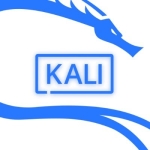How has it helped my organization?
Red Hat Enterprise Linux specifically was a hard requirement for certain software that we wanted to utilize. In fact, purchasing Red Hat’s enterprise version was necessary to run AP. That was the primary objective.
Apart from that, the robust networking capabilities offered by Red Hat Enterprise Linux were highly valuable. They have numerous partnerships and dedicated efforts in low-latency technologies, which are particularly beneficial for trading firms. They possess extensive expertise in external tuning and similar aspects.
What is most valuable?
Overall, the reliability stands out the most for me. While the package selection might be somewhat restricted, it is highly integrated and cohesive.
What needs improvement?
I'm really excited about some of the developments happening in the workstations and the Fedora Silverblue space. There are advancements like rpm-ostree and the OCI container format, which enable deploying RHEL in new ways.
As we have numerous developer workstations, being able to deploy them in an image-based format is highly desirable. This would allow us to use the "toolbox" concept, where developers can choose any desired operating system within the toolbox. Some of our developers also work with Ubuntu and Oracle Linux. Having a consistent developer platform with full pseudo permissions and zero permissions within that container or toolbox would be beneficial.
Additionally, having an image that includes all the necessary software and provisioning it so that subsequent updates provide the updated image, would significantly enhance the developer experience. It would be great if teams could make modifications and changes to the image, like rebasing. I think it would be an awesome feature.
Let me provide an example of why this would be valuable for Red Hat Enterprise Linux Workstation. We recently switched from one security software application to another similar application on our workstations. We had to manually remove the unwanted software and install the new one. It was manageable for servers or edge devices, but for remote devices that are not always on the network or VPN, it became a cumbersome task to reach out to each device and remove and install the software. If we could update an image with the old software removed and the new software installed, and then allow users to update their image, it would simplify the process for everyone. Currently, it's possible with Red Hat Enterprise Linux for Edge, but it would be fantastic if this capability could be extended to Red Hat Enterprise Linux Workstation as well. That's what would be really cool.
For how long have I used the solution?
The company has been using Red Hat Enterprise Linux for a significant period of time. As for myself, it's been around five years or so. I have also contributed to GNOME. About ten years ago, I was one of 12 individuals who wrote documentation for GNOME 3.
I don't think we are leveraging Red Hat Enterprise Linux on the cloud. Since we are primarily involved in trading, our infrastructure is predominantly on-premises, accounting for about 80%. We have our own data centers. While we do have some cloud workloads and our cloud presence is growing, it isn't a major focus in my role. I serve as the lead engineer for 700 developer workstations that run Linux. For parts that use Red Hat Enterprise Linux on the cloud, we are split between different cloud providers, AWS, Azure, and Google Cloud.
For the most part, we are using Red Hat Enterprise Linux 8, which we support alongside Ceph and a bit of AAP. Apart from that, there is still a significant amount of CentOS 7 in use as people are gradually transitioning away from it.
What do I think about the stability of the solution?
The stability is good. I would rate it a nine out of ten.
What do I think about the scalability of the solution?
The scalability is impressive. I would rate it a nine out of ten.
How are customer service and support?
The customer service and support were pretty good. We encountered an issue, and we involved some people for assistance. In retrospect, we should have engaged higher-level support sooner for that specific issue. Support can be challenging when you're dealing with Linux problems, especially in our environment where we have a lot of skilled engineers; it feels like we're already operating beyond the normal troubleshooting space. So having access to escalated help when we need it is valuable. The support fixed our problem.
How would you rate customer service and support?
How was the initial setup?
The initial setup was complex because we were using a newer version of Red Hat Enterprise Linux for the server team's workloads. Normally, we go with Red Hat Enterprise Linux for hardware, but this time we got a better deal from a different vendor whose IPMI Redfish interface wasn't as advanced as Red Hat Enterprise Linux's. This caused some issues specifically related to deploying the newer version. However, once we managed to overcome most of those challenges, the use of Ansible for OS deployment became more straightforward.
What about the implementation team?
For the OS component, we worked directly with Red Hat. However, we utilized a company called Bits, based in Elk Grove, Illinois, to handle the hardware provisioning and setup.
What was our ROI?
We've seen an ROI. For instance, we were able to run a storage workload on one cluster that had an immense capacity. I calculated it to be the equivalent of either 16,000 iPads or 64,000 iPads. It was a significant amount. This capability is beneficial for us as we deal with a lot of trading data. We can perform analytics and machine learning workloads on it, which aids in compliance and enables traders to make more informed trades. It's a win-win situation.
The compliance aspect ensures that we stay out of trouble, and the machine learning capabilities help traders make better trades, which ultimately contributes to our success. I'm glad that they make money. It's wonderful.
What's my experience with pricing, setup cost, and licensing?
Red Hat is making efforts to simplify the SKU system, which is a positive development. It's beneficial to have the flexibility to allocate a certain budget to explore different licenses within the Red Hat ecosystem. We can try out products and decide if they meet our needs. If they don't, we can decommission the corresponding SKU. I have noticed that we have some Red Hat entitlements that we are not currently utilizing, so having granularity in the SKU structure would be an advantage.
Which other solutions did I evaluate?
For our specific use cases, certain products like SAP, AAP, and OpenShift require Red Hat Enterprise Linux. That played a significant role in our decision.
What other advice do I have?
Red Hat Enterprise Linux’s built-in security features, in terms of simplifying risk reduction and maintaining compliance, are an area where I've observed some of the developments with Satellite and Red Hat Insights. But since we have different operating systems, such as Windows, Mac, Linux, and a mix of server and desktop environments, I'm not sure if Satellite or Insights can integrate seamlessly with all these platforms. Currently, we use a different product to assess our CVE vulnerabilities across hosts, including phones and other devices. I do find the discussions about software supply chain security intriguing. Focusing on that aspect seems really promising.
The portability of applications and containers, specifically for those already built on Red Hat Enterprise Linux, seems pretty good. Red Hat offers UBI images that are freely available without the need for licensing. Red Hat Enterprise Linux and container platforms provide a solid setup for portability.
Overall, I would rate the solution a ten out of ten.
Disclosure: My company does not have a business relationship with this vendor other than being a customer.
















